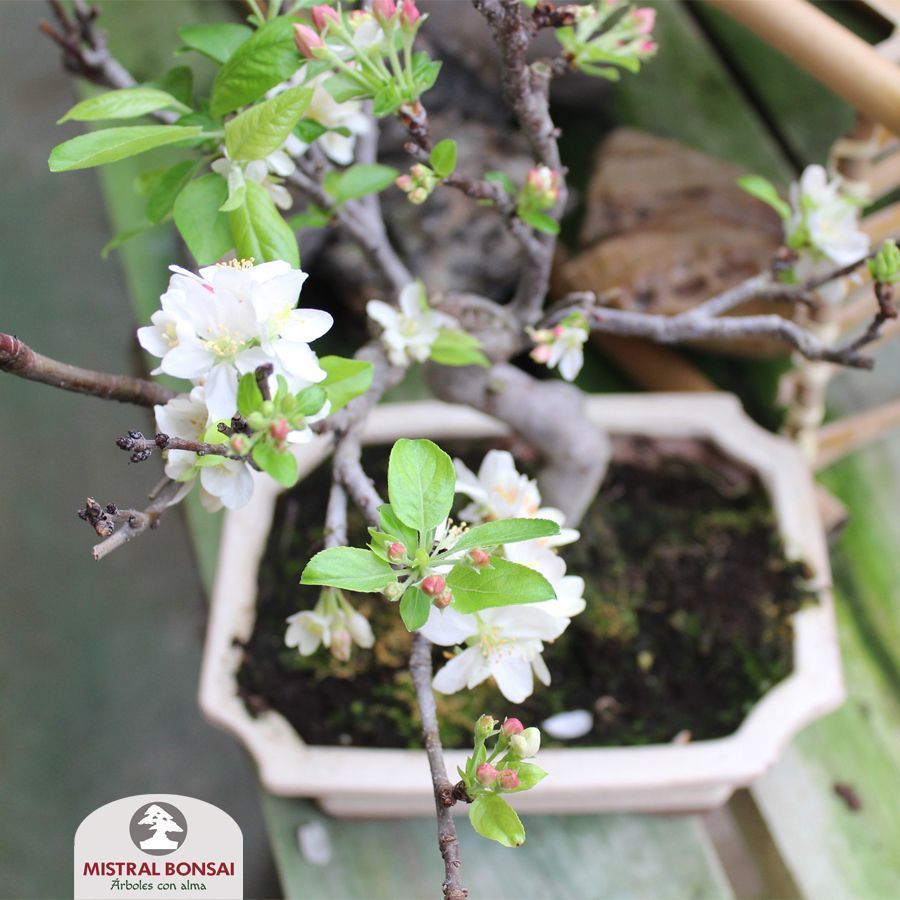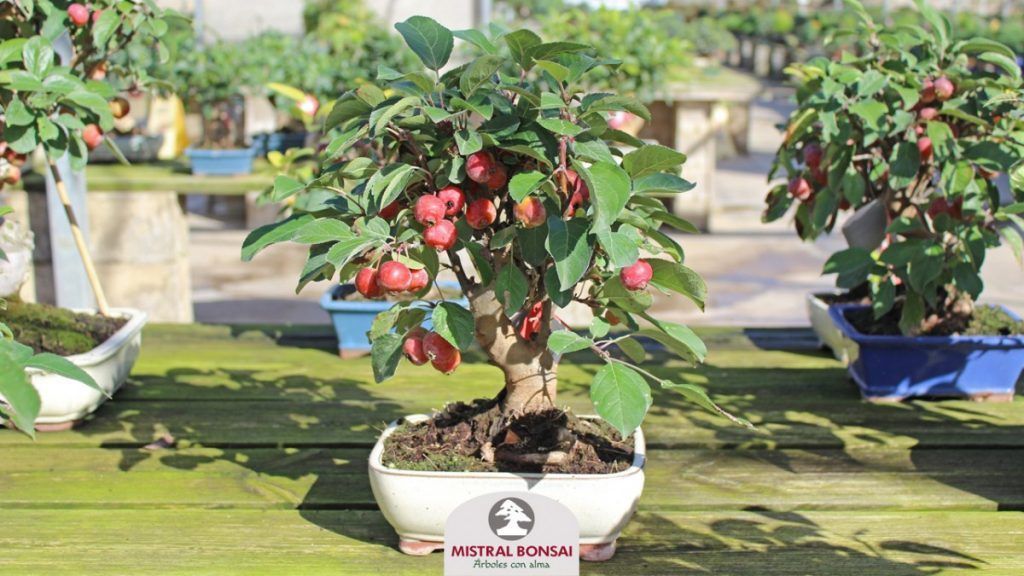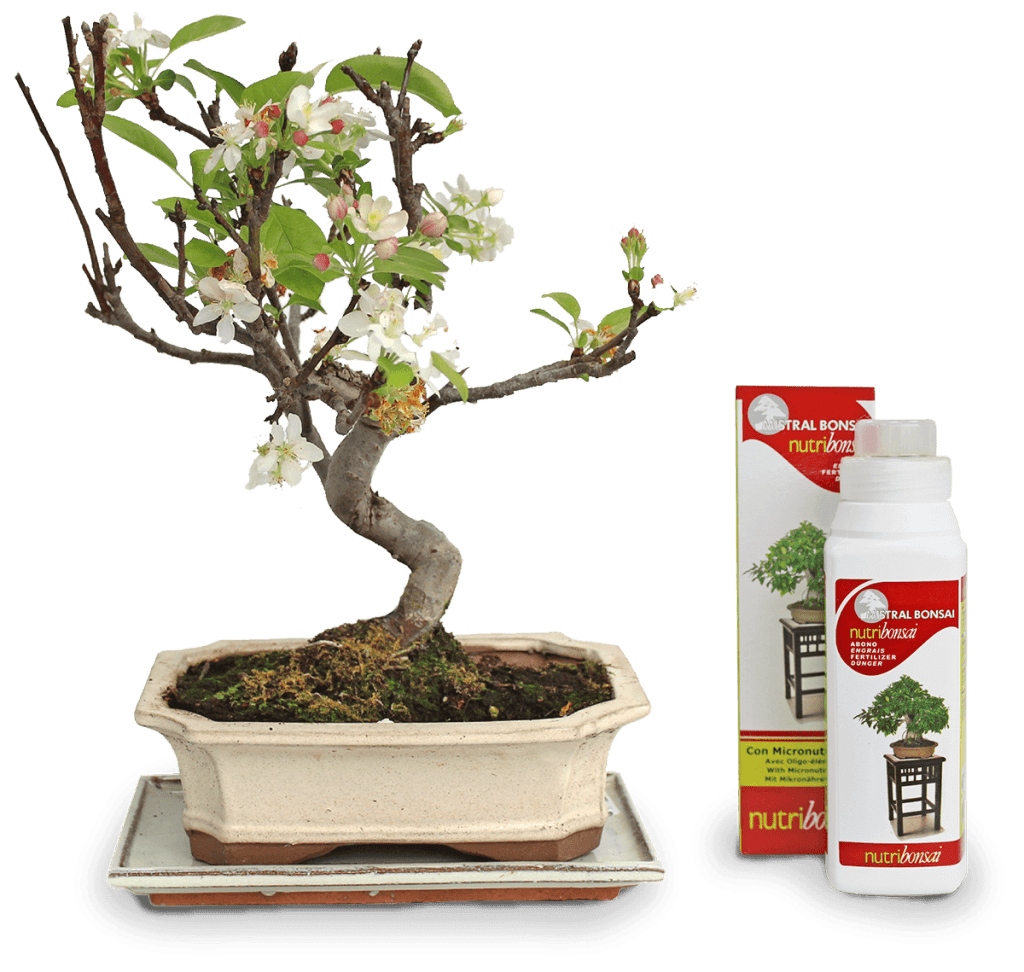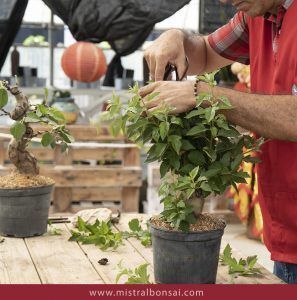Apple trees, an essential bonsai on your terrace.
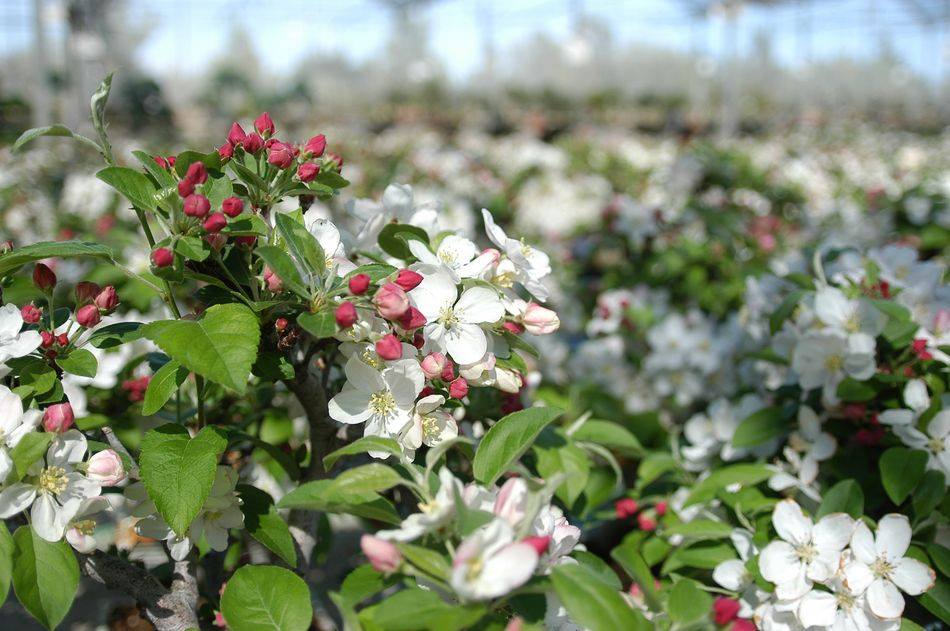
Apple trees are an essential bonsai for the collection of any bonsai lover. Do you want to know more about them? What makes them so unique? Follow this article and find out.
The botanical family of the Malus can give you many pleasant surprises if you work it as a bonsai. Today I will give you a step-by-step guide with the appropriate suggestions so that you can add to your collection this species so well greeted by the bonsai world.
Origin
“The Malus” are a genus of the “Rosaceae” family, which has accompanied man for more than 15 thousand years. Its origin is varied, from the shores of the Caspian Sea, passing through the entire Caucasus, to the Northwest region of China. It was introduced to Europe by the Romans and there are more than 1,000 hybrid species.
What strikes us most about apple trees are their flowers and fruits. Its bloom is abundant and ranges from white, to a very subtle lilac, by way of pale pink. In addition, another attraction is its light and dark red fruits, of small size, that are ideal for bonsai.
Another of its charms is the possibility to observe the passing of the seasons. In winter, it gets rid of its leaves, allowing us to observe the silhouette of its trunk and the beauty of its shapes. When winter welcomes spring, we see quite a spectacle; The greying colour of the trunk contrasts with the pink colour of the flower buds. At milder temperatures, the flowers explode, giving way to bright green leaves. With the arrival of summer, its small fruits appear, that ripen over the months. In autumn, they will offer us an incomparable intense red colour. Gradually, its leaves will wilt in preparation for winter.
Taking care of a Malus bonsai means seeing the passing of the seasons and observing the changes that each one gives us.
Where to place apple trees in bonsai
Malus are outdoor bonsais. They need as much sunlight as possible. In summer we will apply the same care as for your other outdoor bonsais, that is, protect them from the strong midday sun. Although it resists frost well, it is advisable to protect them in a greenhouse if the temperature is below -2ºC.
Watering. How to properly water your malus bonsai.
Proper watering is one of the critical points in any bonsai care. How to do it? We will check the surface of the substrate and water only when this surface is dry. Pay special attention during hot summer days, as you will surely have to water more frequently.
Remember: when it is in full bloom, don’t water the flowers. This would make them wilt more quickly and will not allow you to enjoy all their charm.
Fertilisation
To fertilise an apple tree bonsai we must take into account the passing of the seasons. For each one of them the bonsai will need more or less nutrients. This will depend on the phase it is in.
When after winter the temperature begins to rise, we must apply a fertilizer that favours its growth. A fertiliser with these characteristics can be Joy Tamahi or Nutribonsai.
In mid-spring we can apply the Bio Gold fertiliser to promote the flowering of our apple bonsai.
After flowering, we can continue fertilising with any of the previous fertilisers.
In order not to weaken the energy of our small tree, we recommend that you remove a third of its fruits. This will ensure that it has the energy reserves it needs.
Re-potting
The re-potting of the bonsai must be carried out every 2/3 years approximately. It will depend on the wear of the substrate and the number of roots that your bonsai has. You will be able to know it when the irrigation water does not drain well and the soil is very tight and compacted. Another warning that the bonsai gives us is when the roots take up a lot of space in the pot.
Before doing the re-potting, we will have to make sure that the tree is in an optimal state.
We will re-pot between late winter and early spring, just before the swelling of the buds and the bonsai’s flowering.
To start the re-potting, the first thing we will do is to unroll the roots and leave the branches that are necessary for the design. As basic substrate we can use a mixture of Terrabonsai (70%) and Akadama (30%).
Remember that the previous year, if necessary, we should prune the branches that we do not want. The reason is very simple. For example, if we remove roots that feed 8 branches, the same branches will still need to be fed, but with fewer roots, so the tree would have to overstrain. But if we do the pruning before removing roots, the tree will no longer have to make an extra effort.
When can I prune and pinch ?
Pinching can be done all year round. It is about removing the buds that have come out of the silhouette of your bonsai.
Bonsai pruning aims to define the structure and design of the tree. Taking into account that it is a deciduous, if the pruning is drastic, it is better to prune in spring. Since the sap circulation is active, the tree will be able to heal its wounds more easily. If we only have to prune secondary branches, we can do it in fall; The tree will have no leaves and we will be able to better see the structure of the branches.
Wiring your apple tree bonsai
The wiring is very similar to that of other outdoor species. We must keep in mind that apple trees are not very flexible. If we need to drastically change the position of a branch, we will do it in spring preferably. The sap will be more active and will avoid breakage of branches. If, on the other hand, we want to wire secondary branches, we can do it in autumn, when the tree is leafless.
We hope this blog has been very helpful to you.
Send us the photos of your apple trees or tag us on Instagram or Facebook to see your progress and enjoy the malus!
You may also be interested in…
About the Author
Mistral Bonsai
In Mistral Bonsai we are a communication team, technicians and masters committed from the first day to disseminating the wonderful art of bonsai. A world that offers many things to share. We believe that a bonsai is a tree with a soul, unique and unrepeatable. Another of our most essential pillars is, how could it be otherwise, our close commitment to the preservation of the environment and nature.
Categories
Bonsai cultivation and care (54)
Bonsai gift (2)
Bonsai pests and diseases (6)
Bonsai repotting (3)
bonsai substrates (2)
bonsai tools (1)
Bonsai work (10)
Ceramic pots (3)
Chinese culture (1)
Chinese culture (2)
Corporative Mistral Bonsai (8)
Cuidados del bonsái (22)
Cultivo del bonsái (20)
Dead wood (2)

